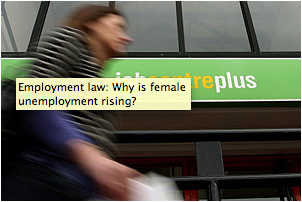A tale of two countries?
 In 1995, Shadow Secretary of State for Scotland, Lord Robertson, asserted ‘devolution will kill nationalism stone dead’. Sixteen years after the first devolved elections, and six months after a ‘No’ vote in the referendum, his pronouncement appears no closer to coming true. By contrast, the two-party Westminster system looks to be under a far greater threat if the polling for general election is accurate.
In 1995, Shadow Secretary of State for Scotland, Lord Robertson, asserted ‘devolution will kill nationalism stone dead’. Sixteen years after the first devolved elections, and six months after a ‘No’ vote in the referendum, his pronouncement appears no closer to coming true. By contrast, the two-party Westminster system looks to be under a far greater threat if the polling for general election is accurate.
In hindsight, this was always a more likely scenario than devolution seeing off nationalism. For while it did take care of the perceived ‘democratic deficit’, it provided nationalists in Scotland and Wales with a structural advantage in devolved institutions elected on a proportional basis. By 2007, nationalists in both Scotland and Wales entered their respective governments, emphasising the clear differences between the party systems at central and devolved level. If the 2010 General Election, with coalition government the outcome, was seen then as an outlier, May 2015 looks likely to make it a trend.
Duverger’s Law suggests that, where first-past-the-post plurality electoral systems exist, a two-party system tends to be the result. Britain has long been cited an example. In 1951, the zenith of two-party politics, Tories and Labour gained 97% of the vote. The latest opinion polls show these two parties totalling just 65%. So, is the two-party system over?
In truth, the two-party system has been a misnomer for some time and a caricature which did not take into account national differences in England, Scotland and Wales (and the entirely different party system which exists in Northern Ireland). Since the rise of the SNP in the 1970s and the merger of the Liberals and Social Democratic Party in 1988 established the Liberal Democrats, the Conservative-Labour duopoly has diminished.
The LibDems regularly polled more than 25% but due to its vote’s geographical spread and the nature of the first-part-the-post electoral system, it rarely won more than 10% of seats. The party had to work hard to overcome this structural disadvantage, with support varying widely in different parts of the country. Targeted campaigning and personable candidates have helped to establish and secure seats in areas such as the Highlands and Cornwall, but there are swathes of the UK where it has failed to make an impact.
The electoral picture in England remains, in party-theory terminology, a ‘two and a half party’ system. The two large parties continue to alternate in government, albeit most recently in coalition with the ‘half party. The emergence of a Green MP and of UKIP as a credible electoral force (with two by-election victories) has already impacted upon the nature of electoral competition on both sides of the political spectrum. UKIP’s Euroscepticism has forced both Labour and the Conservatives to debate EU membership and immigration, which have become dominant themes in the election campaign. While these parties themselves are unlikely to obtain sufficient numbers to change the categorisation of the party system, they are influencing the political debate.
By contrast, the party system in Scotland has long departed from the traditional duopoly. Identity, centre-periphery and the Unionist-Nationalist dimension have led to complicated patterns of voting at different electoral levels: local, Holyrood and Westminster. Different electoral systems at each simply add to the complications. Prior to the 2014 referendum, there appeared to be a pattern to voting in Scotland: the SNP did better in elections to the Scottish Parliament, with other party identifiers ‘lending’ them a vote in this strictly ‘Scottish’ electoral contest. For elections to Westminster, however, those identifiers returned to their ‘natural’ home, and Labour continued to sweep a majority of Scottish seats at Westminster. However, post-referendum, polls suggest that this pattern no longer holds, with the SNP expected to increase their representation substantially at Labour’s expense.
Thus, a straight ‘count’ of parties might not serve as the most useful classification of the party system. Giovanni Sartori’s criteria for establishing the ‘relevance’ of a party – whether the party has the potential to enter government or to ‘blackmail’ the major parties into delivering particular policy objectives – provides us with an opportunity to consider parties which perhaps do not have the strength of numbers required to form government but still retain an influence in the political debate. After 7 May, it looks like we can extend the list of ‘system relevant’ parties to include not only the three major ones, but the SNP (now the third largest party by membership in the UK), UKIP and the Greens (based upon agenda-setting) and, potentially, the Northern Irish parties which may have a say in who takes office.
The dynamics of electoral politics in Britain have also changed markedly. It is no longer (and hasn’t been for some time) a straight left-right contest fought upon class-based expectations. Valence issues have become prevalent, with parties finding a position on a spectrum, rather than a definitive position for or against a particular issue.
So what happens on 7 May is likely to be a function of both an electoral system that favours a party system which no longer exists, and the radically changing dynamics of party competition in the wake of a constitutional referendum (which threatened the very existence of the existing state). The result, in electoral terms, is likely to be a hung parliament. In Scotland, the likely increase in SNP MPs looks set to reduce further the chance of majority government.
Historic Labour strength in Wales also looks to be in decline, though not as markedly in Scotland. And in England, the contest varies by region and by constituency, as seats become marginal between increasing numbers of different parties.
What does this mean in constitutional terms? Scotland, and independence, is not off the political agenda, and nor is the prickly issue of English Votes for English Laws, and how to better govern England. Extending the constitutional question upwards, what happens with EU membership after the election is also up for debate – the potential UKIP increase in seats and influence could play a substantial role here. Indeed, with more parties increasing their representation at Westminster electoral reform might also be on the agenda once again.
In short – those who hoped that the referendum in Scotland would settle the constitutional question appear destined to be disappointed. Constitutional questions look set to dominate for some time to come.
Dr Malcolm Harvey is a Research Fellow at the Centre on Constitutional Change and the University of Aberdeen.



